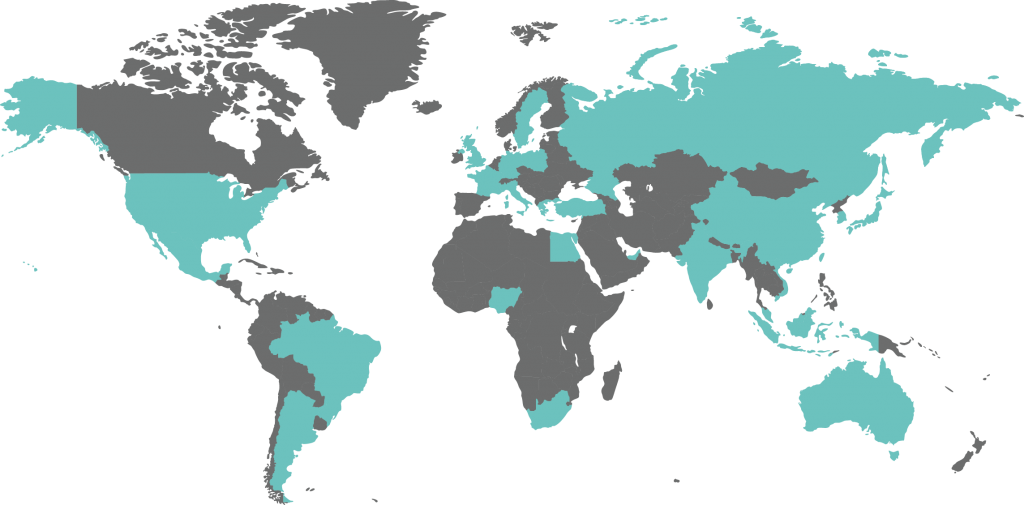What is Soft Power?

What is Soft Power?
Methodology
- Sub Indices
- International Polling
- Full Methodology
The current global rebalancing must be read as an urgent call to action for leaders, diplomats, and foreign policy makers. Without question, those charged with shaping their nation’s foreign policy need to be ready for the uncertain times ahead. As countries work to make sense of the rapidly changing context and adjust strategies accordingly, the soft power resources at the disposal of governments will be a critical part of the foreign policy tools needed going forward. Those countries most adept in using soft power to facilitate positive collaboration will be better placed to weather the current uncertainty and geopolitical instability, and ultimately shape global events. This leads to the question: how can soft power be deployed effectively?
Power in international relations has traditionally been defined and assessed in easily quantifiable ‘hard’ terms, often understood in the context of military and economic might. Hard power is deployed in the form of coercion: using force, the threat of force, economic sanctions, or inducements of payment. In contrast to the coercive nature of hard power, soft power describes the use of positive attraction and persuasion to achieve foreign policy objectives. Soft power shuns the traditional foreign policy tools of carrot and stick, seeking instead to achieve influence by building networks, communicating compelling narratives, establishing international rules, and drawing on the resources that make a country naturally attractive to the world.
Joseph Nye, the originator of the concept, initially set out three primary sources of soft power as he developed the concept. Nye’s three pillars of soft power are: political values, culture, and foreign policy. But within these three categories, the individual sources of soft power are manifold and varied. Our index builds on those three pillars, using over 75 metrics across six sub-indices of objective data and seven categories of new international polling data.
Methodology
The index combines both objective data across six categories (Government, Culture, Education, Global Engagement, Enterprise, and Digital) and international polling, providing a comprehensive framework for the analysis of soft power.
The Soft Power 30 methodology is marked out by three innovative elements that make it the clearest picture to date of global soft power to date:
- The index contains a digital component, developed in collaboration with Facebook, working with their data-science team to create and collect new metrics on countries’ digital diplomacy;
- The index contains international polling from 25 different countries that provide coverage of every major region of the world;
- More than 75 metrics are normalised into comparable data calculating a single score for each country that allow for an overall ranking of global soft power resources.
| Digital | A country’s digital infrastructure and its capabilities in digital diplomacy | |
| Culture | The global reach and appeal of a nation’s cultural outputs, both pop-culture and high-culture | |
| Enterprise | The attractiveness of a country’s economic model, business friendliness, and capacity for innovation | |
| Education | The level of human capital in a country, contribution to scholarship, and attractiveness to international students | |
| Engagement | The strength of a country’s diplomatic network and its contribution to global engagement and development | |
| Government | Commitment to freedom, human rights, and democracy, and the quality of political institutions |

International Polling
For the third edition of the index we polled 11,000 people in 25 countries covering each region of the globe. This was to give an accurate assessment of favourability towards specific aspects of countries that international audiences would find attractive. It was essentially designed to provide a subjective account of the key soft power assets of countries.
Full Methodology
The index compares the relative strength of countries’ soft power resources; assessing the quality of a country’s political institutions, the extent of their cultural appeal, the strength of their diplomatic network, the global reputation of their higher education system, the attractiveness of their economic model, and a country’s digital engagement with the world. Only where absolutely necessary metrics are controlled for population or GDP. But this is not done often as there is ultimately no such thing as ‘soft power per capita’.
Countries for the index were selected to give a representative sample of the world’s major powers, including countries from every geo-political region. We have paid particular attention this year to the hard power of each country in assessing whether it should be included. The selection process included major OECD countries, the emerging BRIC nations and several smaller countries that have carved out a reputation exceeding their size. Data was collected for 61 countries in total, and we have published the top 30 ranking countries.
Normalisation was calculated according to the min-max method, which converts raw data to a figure between the range of 0 to 1. The formula for normalising data is as follows:
Itqc = (xtqc – minc (xqt0))/(maxc(xqt0) – (minc (xqt0))
This year, we have made two technical improvements to the methodology.
First, we tightened up the data normalisation process of the objective data, to mitigate distortions from a small number of metrics with extremely large variances in value.
Second, as we have developed a system for weighting the subjective data using regression analysis based on the overall favourability question, we decided to run the same exercise on the objective data and developed a weighting for each sub-index of the objective. It is important to note, we did not weight individual metrics, but simply the total score of each sub-index.
More information on methodology can be found in the report.